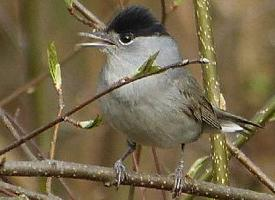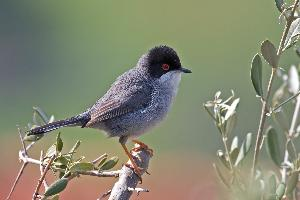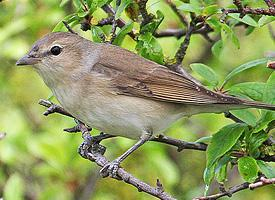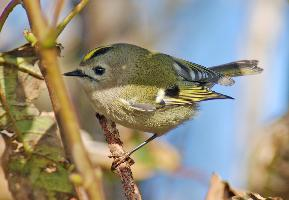
Súlyok és méretek
| Hossz | 14 cm |
|---|---|
| Súly | 14-tól 20-ig g |
Állatleírás
The Eurasian Blackcap, scientifically known as Sylvia atricapilla, is a small yet fascinating songbird that belongs to the warbler family, Sylviidae. It is widely recognized for its distinctive appearance and melodious song, characteristics that have endeared it to bird enthusiasts across its range. This bird exhibits marked sexual dimorphism, meaning males and females display different physical characteristics, most notably in their plumage coloration.Males of the species boast a striking black cap atop their heads, from which the bird derives its common name, contrasting beautifully with their grey bodies and lighter underparts. Females, on the other hand, feature a chestnut-brown cap that blends seamlessly with their more muted grey-brown plumage. Both sexes have sharp, black eyes, a small, finely pointed beak adapted for their insectivorous diet, and relatively long, rounded wings that facilitate their migratory habits.
Eurasian Blackcaps are medium-sized warblers, measuring about 12 to 15 centimeters in length and weighing approximately 16 to 25 grams. They possess a slender, agile build that aids in navigating through dense foliage in search of food, which predominantly consists of insects during the breeding season and berries or fruits during the winter months.
The natural habitat of the Eurasian Blackcap spans across a wide range of temperate forests, woodlands, and gardens throughout Europe, North Africa, and the southwestern parts of Asia. Remarkably adaptable, they are often found in deciduous and mixed forests but can also thrive in urban areas where green spaces are available. During the winter, many northern populations migrate to the Mediterranean and sub-Saharan Africa to escape the colder temperatures, showcasing an impressive resilience and adaptability to varying climates.
Breeding season for the Eurasian Blackcap is a time of vibrant activity, beginning in late April and continuing through July. The males are known for their beautiful and complex songs, a series of melodious chirps and whistles that serve to attract females and assert territorial claims. Nests are meticulously constructed by the females in dense shrubbery or low in trees, where they lay and incubate a clutch of typically 4 to 6 eggs. Both parents are involved in the rearing of the young, which are ready to fledge in about 11 to 12 days after hatching.
In recent years, the Eurasian Blackcap has been the subject of much interest among ornithologists and conservationists due to its changing migratory patterns, likely in response to climate change and alterations in its natural habitat. Despite these pressures, the species has shown remarkable adaptability, even expanding its range in some areas. Currently, the Eurasian Blackcap is classified as Least Concern by the International Union for Conservation of Nature (IUCN), reflecting its stable population numbers across much of its range.
In summary, the Eurasian Blackcap is a species of considerable interest due to its distinctive appearance, enchanting song, and adaptability to changing environments. Its presence enriches the biodiversity of its habitats, making it a cherished member of the avian community across its extensive range.
Hasonló állatok
Új állatfotók
Top 10 állat
- Dolphin gull (Leucophaeus scoresbii)
- Diana monkey (Cercopithecus diana)
- Moustached guenon (Cercopithecus cephus)
- Galápagos tortoise (Geochelone nigra complex)
- Japanese macaque (Macaca fuscata)
- Russian tortoise (Testudo horsfieldii)
- Stone loach (Barbatula barbatula)
- Greek tortoise (Testudo graeca)
- Common flying dragon (Draco volans)
- Vendace (Coregonus albula)


